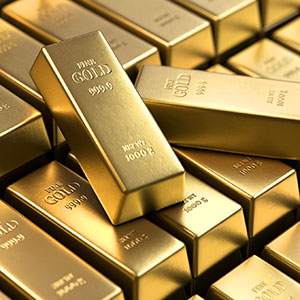
On Wednesday, the spot price of gold smashed through the $1,800-an-ounce barrier, the first time that has happened since 2011.
At publication time, the spot price of gold had dropped from Wednesday’s closing price of $1,809 an ounce, and it was trading at exactly $1,800 an ounce. That is still a benchmark the yellow metal has not reached in nine years—and it’s not that far from the all-time record spot price of $1,923.70, which it hit in September 2011.
Gold’s rise this year has been slower and choppier than some analysts predicted: Some thought that it would quickly cross the $1,800 barrier in April, when it first soared past the $1,700 benchmark. Instead, it mostly stayed in that range for the spring and summer.
Overall, though, the yellow metal has had an incredibly impressive year, with is price rising 20% since January, when it traded in the $1,500 range. It first crossed the $1,600 mark in February.
Analysts generally credited to the metal’s rise to the ongoing COVID-19 pandemic, particularly its effect on the United States, where there has been a dramatic spike in cases this summer.
“Fears of further increases in infections and related lockdown fears have been driving demand and thus prices,” Carsten Menke, an analyst with Swiss bank Julius Baer, told the Financial Times. “This suggests that short-term price risks remain skewed to the upside as long as the virus does not come under control.”
According to Bloomberg, analysts now believe that future records—including possibly closing the $2,000 mark—are almost inevitable.
“We now think that it is a matter of when, not if, gold may set a new record high,” said Oversea-Chinese Banking Corp. economist Howie Lee, according to the news service. “The previous record close of $1,900 is now in plain sight and we suspect gold might even attempt $2,000 before the end of 2020 if the number of U.S. cases does not abate.”
(Photo: Getty Images)
- Subscribe to the JCK News Daily
- Subscribe to the JCK Special Report
- Follow JCK on Instagram: @jckmagazine
- Follow JCK on X: @jckmagazine
- Follow JCK on Facebook: @jckmagazine